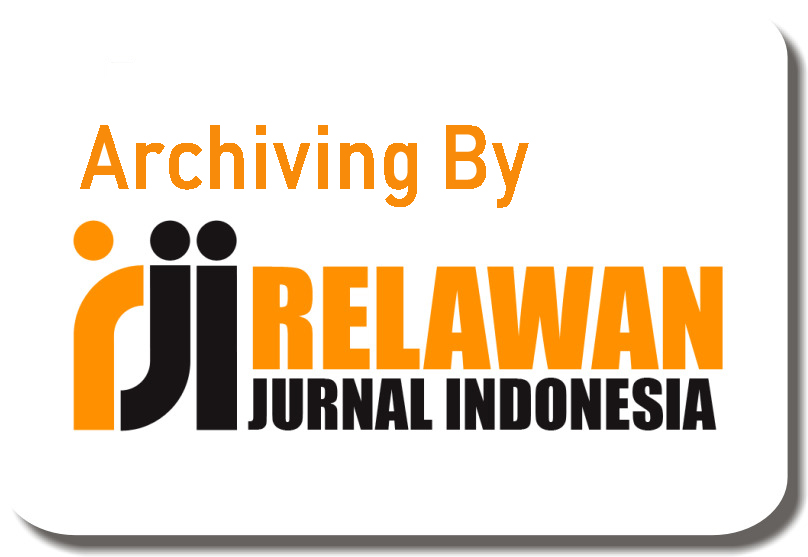THE DEVELOPMENT MODEL OF ASSESSMENT WRITING BASED ON AUTHENTIC
Abstract
Full Text:
PDFReferences
Abedi, J. (2004). The no child left behind act and English language learners: Assessment and accountability issues. Journal of American EducationalResearch Association, 33, 4-13.
Achmadi SS. (2008), Tata Saji Buku Ajar, Pelatihan Penulisan Buku Ajar: Jakarta
Anwar, Syafri. 2009. Penilaian Berbasis Kompetensi, (Padang: UNP Press)
Bog, C.R. (1982). Qualitative research for education: An introduction to theory and methods. Boston: Ally and Bacon Inc.
Bolt, D.M., Cohen, A.S., & Wollack, J.A. (2001). A mixure item response model for multiple-choice data. Journal of Educational and Behavioral Statistics, 381- 409.
Borg, W.R., & Gall, M.D. (1983). Educational research: An introduction. (4th ed). New York & London: Longman.
Flannery, K.T. (2000). Contextualizing course evaluations: Using students selfevaluation.Diambil pada tanggal 15 September 2006 dari Sumber: File:/E:Kumpulan JurnalContextualizing Course Evaluation.htm. C 2000 by the Association of Departments of English. All Rights Reserved ADE Bulletin 126 (Fall 2000): 53-57.
Gail (2012). Digital Portopolio. Measurement and Evaluation in Psychology and Education, New York.
Ghani, A.R.A., Hari, S., & Suyanto. (Ed). (2006). Evaluasi pendidikan: Konsep dan aplikasi. Jakarta: UHAMKA Press.
Grambs, J.D. & Carr, J.C. (1979). Modern methods in secondary education. New York: Holt,
Gronlund, N.E. (1981). Measurement and evaluation in teaching. (4th ed). New York:Macmillan Publishing. 306
Hamalik, O. (2005). Pendidikan guru: Keterampilan guru. Bandung: Penerbit Mandar Maju
Harjanto .( 2005) . Perencanaan Pengajaran .Jakarta : Rineka Cipta.
Hasan dan Zainul, A. (1992). Evaluasi Hasil Belajar. Jakarta: Depdikbud.
Holman, R. & Berger, M.P.F. (2001). Optimal calibration designs for tests of polytomously scored items described by item response theory models. Journal of Educational and Behavioral Statistics, 361-380.
Hughes, A. (2003). Testing for language teachers. Cambridge: Cambridge University Press
McDonald, R.P. (1999). Test theory: A unified treatment. Mahwa, N.J: Lawrence Erlbaum Association, Publishers.
Mehrens, W.A. & Lehmann, I.J. (1973). Measurement and evaluation: An educationand psychology. New York: Holt, Rinehart and winston, Inc.
Miles, M.B. & Huberman, A.M. (1994). Qualitative data analysis: An expanded sourcebook.
New York: SAGE Publications.
Ming-Chung Yu. (2006). On the teaching of L2 sosiolinguistic competence inclassroom settings.
Diambil pada tanggal 8 September 2006, dari file://F:AsianEFL Journal English Language Teaching and Research Articles.htm.
Morse, J.M. (1994). Critical issues in qualitative research methods. London: Sage
Publications.
Naugle, K.A. (2000) . Kirkpatrick's evaluation model as a means of evaluating teacher performance. Diambil pada tanggal 15 November 2005, dari http://www. findarticles.com/p/articles.
Nitko, A.J, 1996. Educational Assessment of Students. 2nd edition. ( New Jersey : Merril and Imprint of Prentice Hall)
OMalley, J.M. & Pierce, L.V. (1996). Authentic assessment for English language learners: Practical approaches for teachers. New York: Addison WesleyLongman, Inc.
Ornstein, A.C. & Hunkins, F.P.1988. Curriculum: Foundations, principles, and issues. Engleewood Cliffs, .J.: Prentice Hall.
Ornstein, Allen C, ,Levine Daniel U., Gutek,Gerald L and Vockie, David E. 2007. Foundation of Education. .Belmonth: Wadwarth.
Ornstein, Allan & Hunkins, Francis .P. 2013. Curriculum: Foundations, principles, and issues. Boston:Pearson.
Popham, W.J. (1995). Classroom assessments: What teachers need to know. Toronto: Allyn Bacon.
Prihartono, Nurudin, & Sudaryanto. (2005). Upaya meningkatkan keefektifan pembelajaran Richards, J.C. & Renandya, W.A. (2002). Methodology in language teaching: An anthology of current practice. Cambridge: Cambridge University Press.
Richards, J.C. (2006). Curriculum development in language teaching. New York: Cambridge University Press.
Sagala, Syaiful. (2011). Konsep dan Makna Pembelajaran. Bandung : Alfabeta.
Samana, A. (1994). Profesionalisme keguruan. Yogyakarta: Kanisius.
Saukah, A. (1998). Evaluation of pre-departure English training program. Jurnal Ilmu Pendidikan, Jilid 5, Nomor Suplemen, 68-83
DOI: https://doi.org/10.31004/jele.v2i2.27
Refbacks
- There are currently no refbacks.
Copyright (c) 2018 Journal of English Language Education



